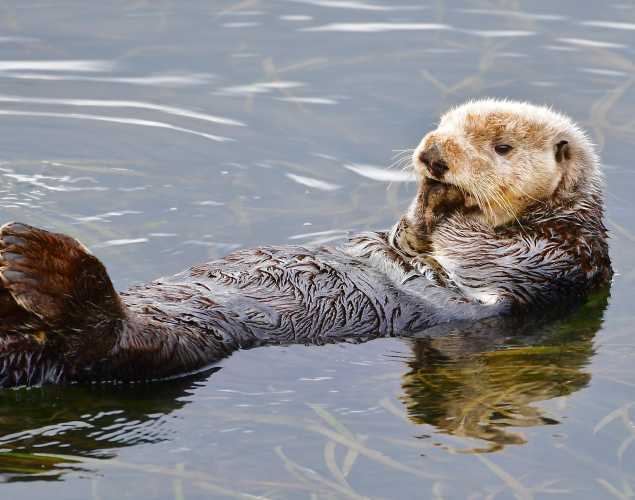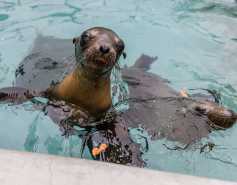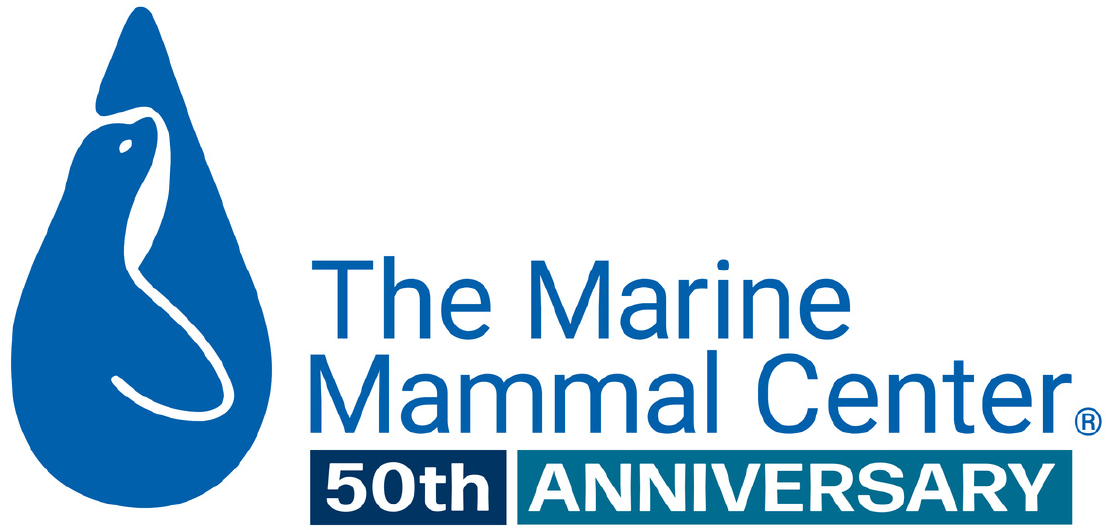
New Brucella Bacterial Infection in Southern Sea Otters
- Infectious disease
Abstract
We characterize Brucella infection in a wild southern sea otter (Enhydra lutris nereis) with osteolytic lesions similar to those reported in other marine mammals and humans. This otter stranded twice along the central California coast, US over a 1-yr period and was handled extensively at two wildlife rehabilitation facilities, undergoing multiple surgeries and months of postsurgical care. Ultimately the otter was euthanized due to severe, progressive neurologic disease. Necropsy and postmortem radiographs revealed chronic, severe osteoarthritis spanning the proximal interphalangeal joint of the left hind fifth digit. Numerous coccobacilli within the joint were strongly positive on Brucella immunohistochemical labelling, and Brucella sp. was isolated in pure culture from this lesion. Sparse Brucella-immunopositive bacteria were also observed in the cytoplasm of a pulmonary vascular monocyte, and multifocal granulomas were observed in the spinal cord and liver on histopathology. Findings from biochemical characterization, 16S ribosomal DNA, and bp26 gene sequencing of the bacterial isolate were identical to those from marine-origin brucellae isolated from cetaceans and phocids. Although omp2a gene sequencing revealed 100% homology with marine Brucella spp. infecting pinnipeds, whales, and humans, omp2b gene sequences were identical only to pinniped-origin isolates. Multilocus sequence typing classified the sea otter isolate as ST26, a sequence type previously associated only with cetaceans. Our data suggest that the sea otter Brucella strain represents a novel marine lineage that is distinct from both Brucella pinnipedialis and Brucella ceti. Prior reports document the zoonotic potential of the marine brucellae. Isolation of Brucella sp. from a stranded sea otter highlights the importance of wearing personal protective equipment when handling sea otters and other marine mammals as part of wildlife conservation and rehabilitation efforts.
Miller, M.A., Burgess, T.L., Dodd, E.M., Rhyan, J.C., Jang, S.S., Byrne, B.A., Gulland, F.M., Murray, M.J., Toy-Choutka, S., Conrad, P.A., Field, C.L., Sidor, I.F., Smith, W.A. 2017. Isolation and characterization of a novel marine brucella from a southern sea otter (Enhydra lutris nereis), California, USA. Journal of Wildlife Disease 53(2).
Cara Field
Related Publications
{"image":"\/Animals\/Wild\/Other species\/nz-sea-lion-shutterstock.jpg","alt":"New Zealand sea lion","title":"Causes of Death in Two Populations of New Zealand Sea Lions","link_url":"https:\/\/www.marinemammalcenter.org\/publications\/causes-of-death-in-two-populations-of-new-zealand-sea-lions","label":"Research Paper"}

{"image":"\/Animals\/Patients\/California sea lions\/csl-by-bill-hunnewell-c-the-marine-mammal-center-6.jpg","alt":"California sea lions","title":"Zoonotic Bacteria Persistence and Susceptibility","link_url":"https:\/\/www.marinemammalcenter.org\/publications\/zoonotic-bacteria-persistence-and-susceptibility","label":"Research Paper"}

{"image":"\/Animals\/Patients\/California sea lions\/cropped-images\/csl-photo-by-bill-hunnewell-c-the-marine-mammal-center-1-0-0-2358-1722-1600891644.jpg","alt":"California sea lions","title":"Emerging Viruses in Marine Mammals","link_url":"https:\/\/www.marinemammalcenter.org\/publications\/emerging-viruses-in-marine-mammals","label":"Research Paper"}

{"image":"\/Animals\/Patients\/California sea lions\/csl-photo-by-bill-hunnewell-c-the-marine-mammal-center-12.jpg","alt":"two California sea lions","title":"Multi-Phase Muscle Breakdown in California Sea Lions","link_url":"https:\/\/www.marinemammalcenter.org\/publications\/multi-phase-muscle-breakdown-in-california-sea-lions","label":"Research Paper"}

Recent News
{"image":"\/Animals\/Patients\/Hawaiian monk seals\/2025\/cropped-images\/d-ru28release-exam-at-ke-kai-ola111025photo-by-giancarlo-rulli-c-the-marine-mammal-center-noaa-permit-24359-0-0-1270-992-1764620886.jpg","alt":"","title":"Bird Flu Vaccine Trial Offers Hope for Protecting Hawaiian Monk Seals","link_url":"https:\/\/www.marinemammalcenter.org\/news\/bird-flu-vaccine-trial-may-offer-hope-for-protecting-hawaiian-monk-seals","label":"News Update","date":"2025-12-01 08:13:00"}

Bird Flu Vaccine Trial Offers Hope for Protecting Hawaiian Monk Seals
December 1, 2025
Read More{"image":"\/Animals\/Patients\/Hawaiian monk seals\/2021\/hms-pp08-by-sheila-latta-c-the-marine-mammal-center-noaa-permit-18786.jpg","alt":"Hawaiian monk seal","title":"The New York Times: Inside the Bird-Flu Vaccine Trial for Monk Seals","link_url":"https:\/\/www.marinemammalcenter.org\/news\/the-new-york-times-inside-the-bird-flu-vaccine-trial-for-monk-seals","label":"In the News","date":"2025-12-01 01:00:00"}

The New York Times: Inside the Bird-Flu Vaccine Trial for Monk Seals
December 1, 2025
Read More{"image":"\/Animals\/Wild\/Sea otter\/so-wild-morro-bayphoto-c-brian-simuro-20.jpeg","alt":"Sea otter and pup","title":"Watch a Sea Otter Pup Reunite With Its Mother","link_url":"https:\/\/www.marinemammalcenter.org\/news\/watch-sea-otter-pup-reunite-with-its-mother","label":"News Update","date":"2025-11-14 10:35:41"}

{"image":"\/Animals\/Wild\/Sea otter\/sea-otter-photo-c-brian-simuro.jpeg","alt":"Sea otter","title":"AP News: Baby sea otter is reunited with mother in central California after dramatic rescue","link_url":"https:\/\/www.marinemammalcenter.org\/news\/ap-news-baby-sea-otter-is-reunited-with-mother-in-central-california-after-dramatic-rescue","label":"In the News","date":"2025-11-14 09:46:34"}

AP News: Baby sea otter is reunited with mother in central California after dramatic rescue
November 14, 2025
Read More
